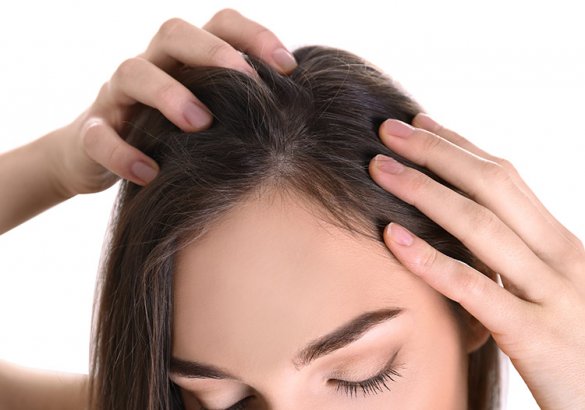-
Does decolouring ruin hair?
Everyone knows that blonde hair never goes out of fashion, but, more importantly, it is the most popular colour as it really does flatter -
Grey hair: how to keep it healthy and beautiful
A real nuisance for many women and forever synonymous with old age, grey hair is actually enjoying a revival -
Is your hair healthy? Ask your scalp
We all want thick strong shiny hair and so we invest time and money sourcing the best haircare products. But while tending to focus on the health of our locks -
Foods that prevent hair loss: the omega-3s
The health and condition of our hair is also affected by what and how we eat. -
Hair loss, when to worry: inheritance and alopecia
When we talk about androgenetic alopecia, we often think about the connection between this condition and inheritance: is it more likely that a person will suffer from alopecia if his close relatives do? -
Hair loss treatment: the 3 habits to avoid for healthy hair
Hair loss is a phenomenon that can have a number of causes. Some of these are physiological, due to the hair’s natural lifecycle; others are hereditary, whereas others still can be caused by the use of certain medicines.
February 25
Understanding how our body works is the first step towards taking care of it in a correct and efficacious manner. The same also applies for our hair: if we want to take care of it, we have to understand how it lives. Hair has a life cycle. Knowing more about this life cycle means being able to care for our hair better, both by using hair loss treatments and with a healthy lifestyle and balanced diet.
The life cycle of hair
The hair life cycle is one of the body’s physiological processes: our hair changes continuously and it is normal for this to happen. This cyclical evolution is not synchronous, meaning that each hair has its own life cycle that is independent of the others and that can last up to six years. Therefore, throughout a person’s lifetime, each hair repeats the same growth cycle, a cycle that entails birth, development, loss and rebirth. The hair follicle, the cavity in the skin from which the hair originates, is therefore a structure of the human body that has a cyclical activity, characterised by alternating growth and resting phases.
The phases of the life cycle of hair
The life cycle of a hair consists of 5 phases:
- ANAGEN PHASE: the phase in which the hair actually grows. As it is regulated genetically, its duration can vary greatly from one person to another; however, it usually lasts between 2 and 6 years. It is characterised by the action of keratinocytes, hair follicle cells that are responsible for the formation, development and constant renewal of hair.
- CATAGEN PHASE: a transition phase that lasts 1-2 weeks, in which proliferation stops. The hair moves away from the hair follicle and migrates towards the more superficial levels of the skin.
- TELOGEN PHASE: a resting phase that can last 2 to 4 months. In this phase, the hair is still inside the hair follicle, but its vital growing activities have stopped.
- EXOGEN PHASE: the final part of telogen phase, when the hair is released from the follicle and falls out.
- KENOGEN PHASE: the last phase is the follicular resting period that occurs between the time the hair falls out and its replacement with a new anagen phase. The follicle can remain in this phase for long periods of time.
As mentioned previously, each hair has its own life cycle. However, it is also true that there are certain times of the year in which hair loss is greater in the telogen phase: in the springtime and, in particular, in the autumn. It is therefore important to care for hair at these times of the year, including using hair loss treatments.
SOURCES:
Related articles







